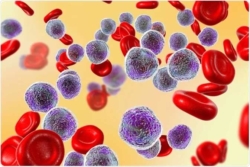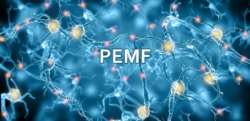Cancer is among the leading causes of death in the US. Despite considerable progress in medicine, cancer is still quite challenging to treat. Moreover, cancer treatment has numerous adverse effects on health.
Among cancers, the most common cancer in men is prostate cancer. Its risk is exceptionally high in men aged 65 years of age or more. It also means that as men live longer, there is an ever-increasing risk of developing prostate adenocarcinoma.
Prostate cancer is quite challenging to manage, too. Fortunately, enough, prostate cancer has an excellent long-term survivability rate. For example, in the US, 90% of those diagnosed can expect to survive 5-years after the diagnosis. Even ten years survivability rate for cancer remains quite good. Nevertheless, it is the most common kind of cancer in men.
All this means that those living with early stages of prostate cancer have significant time to plan their treatment. Moreover, people with prostate adenocarcinoma may also consider alternate therapies. Using alternate treatments can considerably increase survivability.
How may PEMF help in human prostate adenocarcinoma?
PEMF has almost no known side effects and is perfect for regular use. It considerably alters cellular energy production, changes immune responses and boosts regenerative processes. That is why it is approved for promoting bone healing after a trauma.
In most people diagnosed with prostate cancer, benign prostate hypertrophy (BPH) is diagnosed much before cancer. Although BPH is not a precursor of prostate cancer, both conditions often coexist in those diagnosed with prostate cancer.
As carrying out clinical trials with PEMF in BPH is ethical, many studies show the benefits. For example, a study in 27 patients living with BPH showed that 28 days of use of PEMF could considerably help improve BPH symptoms, improve urinary flow, and boost sexual function.
Similarly, many other studies show that PEMF can help reduce prostate volume, improve libido and semen quality. PEMF appears to be quite good for prostate health, and in many cases, better than some commonly used supplements.
The above studies are not in prostate adenocarcinoma, but they already indicate that PEMF is good for prostate health and may help improve urinogenital health. Thus, there is a firm reason to consider its use in prostate cancer.
There are already many studies in animals and even some human trials suggesting that PEMF can be used as an adjuvant/add-on treatment to manage prostate adenocarcinoma and improve the quality of life.
Studies show that PEMF has a direct effect on cancer cells. It can suppress the growth of cancer cells. Further, it appears that PEMF can help control angiogenesis (formation of new blood vessels in the tumor).
PEMF can also modulate gene expression and thus help the body fight various cancers like prostate adenocarcinoma. PEMF also modulates protein synthesis, especially in cancer cells. Cancer cells grow more aggressively, and PEMF can prevent aggressive growth by limiting protein production.
Researchers think that there are many other ways in which PEMF helps. For example, experimental studies show that PEMF considerably slows down tumor cell growth. Thus, it may also have an effect on the cell membrane, electrochemistry, and cell physiology.
Additionally, it is well known that PEMF has an immunomodulatory effect. Therefore, there is quite a possibility that these changes in immune response may also help control the growth of prostate adenocarcinoma.
Further, PEMF helps due to its broader health benefits, thus strengthening the body’s capacity to fight cancer. Thus, PEMF can stimulate specific cancer-fighting properties of the body, reduce stress levels, help reduce the side effects of anti-cancer drugs.
It is not to suggest that one should use PEMF to treat prostate adenocarcinoma. However, these studies indicate that PEMF can be safely added to the prostate cancer management program. It may not cure cancer, but it many helps fight it, considerably increasing the patients’ survivability.
Moreover, there are no known side effects of PEMF in cancer patients. It has other benefits like improving mood, reducing emotional stress, boosting metabolism, increasing energy levels.
These days most PEMF devices are quite compact and easy to use. They are readily available for daily use at home. Thus, the comfort of PEMF therapy is also its significant positive point. Additionally, most PEMF mats have other functions like providing photon light therapy, infrared treatment, and much more.
To conclude, PEMF is a non-toxic treatment for many health conditions. It also appears to help fight prostate cancer, reduce the growth of cancer cells. In addition, it is safe for use along with drug therapy. Further, it may have many symptomatic benefits like improved urinary flow, libido, and sexual function.






